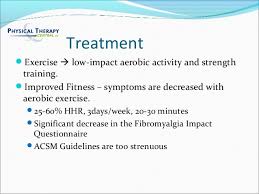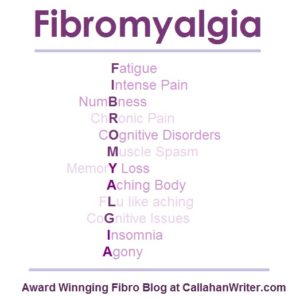How is Fibromyalgia treated?
There is no cure for fibromyalgia. However, symptoms can be treated with both non-drug and medication based treatments. Many times the best outcomes are achieved by using multiple types of treatments.
Non-Drug Therapies: People with fibromyalgia should use non-drug treatments as well as any medicines their doctors suggest. Research shows that the most effective treatment for fibromyalgia is physical exercise. Physical exercise should be used in addition to any drug treatment. Patients benefit most from regular aerobic exercises. Other body-based therapies, including Tai Chi and yoga, can ease fibromyalgia symptoms. Although you may be in pain, low impact physical exercise will not be harmful.
Cognitive behavioral therapy is a type of therapy focused on understanding how thoughts and behaviors affect pain and other symptoms. CBT and related treatments, such as mindfulness, can help patients learn symptom reduction skills that lessen pain. Mindfulness is a non-spiritual meditation practice that cultivates present moment awareness. Mindfulness based stress reduction has been shown to significantly improve symptoms of fibromyalgia.
You can also try other complementary therapies such as:
- Massage therapy.
- Movement therapy.
- Chiropractic therapy.
- Acupuncture.
- Diet supplements.
Other complementary and alternative therapies (sometimes called CAM or integrative medicine), such as acupuncture, chiropractic and massage therapy, can be useful to manage fibromyalgia symptoms. Many of these treatments, though, have not been well tested in patients with fibromyalgia.
It is important to address risk factors and triggers for fibromyalgia including sleep disorders, such as sleep apnea, and mood problems such as stress, anxiety, panic disorder, and depression. This may require involvement of other specialists such as a Sleep Medicine doctor, Psychiatrist, and therapist.
Medications: The U.S. Food and Drug Administration has approved three drugs for the treatment of fibromyalgia. They include two drugs that change some of the brain chemicals (serotonin and norepinephrine) that help control pain levels: duloxetine (Cymbalta) and milnacipran (Savella). Older drugs that affect these same brain chemicals also may be used to treat fibromyalgia. These include amitriptyline (Elavil) and cyclobenzaprine (Flexeril). Other antidepressant drugs can be helpful in some patients. Side effects vary by the drug. Ask your doctor about the risks and benefits of your medicine.
The other drug approved for fibromyalgia is pregabalin (Lyrica). Pregabalin and another drug, gabapentin (Neurontin), work by blocking the over activity of nerve cells involved in pain transmission. These medicines may cause dizziness, sleepiness, swelling and weight gain.
It is strongly recommended to avoid opioid narcotic medications for treating fibromyalgia. The reason for this is that research evidence shows these drugs are not of helpful to most people with fibromyalgia, and will cause greater pain sensitivity or make pain persist. Tramadol (Ultram) may be used to treat fibromyalgia pain if short-term use of an opioid narcotic is needed. Over-the-counter medicines such as acetaminophen (Tylenol) or nonsteroidal anti-inflammatory drugs (commonly called NSAIDs) like ibuprofen (Advil, Motrin) or naproxen (Aleve, Anaprox) are not effective for fibromyalgia pain. Yet, these drugs may be useful to treat the pain triggers of fibromyalgia. Thus, they are most useful in people who have other causes for pain such as arthritis in addition to fibromyalgia.
For sleep problems, some of the medicines that treat pain also improve sleep. These include cyclobenzaprine (Flexeril), amitriptyline (Elavil), gabapentin (Neurontin) or pregabalin (Lyrica). It is not recommended that patients with fibromyalgia take sleeping medicines like zolpidem (Ambien) or benzodiazepine medications.
Always confirm with your doctor which RX is best and not contraindicated for you, for your safety!




